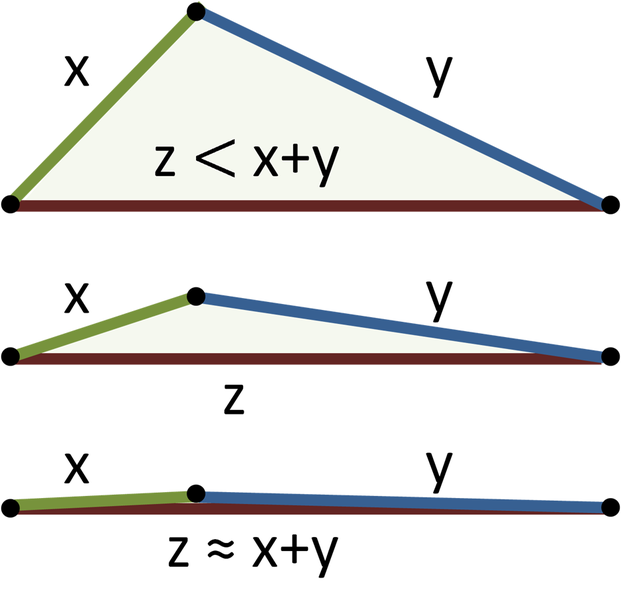A carpenter has three wooden beams of different lengths. He wonders whether he can make a triangular frame without sawing the beams.
This will only be possible if triangle inequality applies to every one of the beams. For three sides $$x$$, $$y$$ and $$z$$ of the triangle this inequality states that $$x + y > z$$. In other words, a straight line is always the shortest distance between two points.

Input
The lengths of the wooden beams. These are real numbers that are each on a separate line. The numbers aren't necessarily ranked from smallest to largest.
Output
The statement "possible" or "impossible", depending on the possibility of forming a triangle with three beams.
Example
Input:
1.5
1.5
3.0Output:
impossibleExample
Input:
4.0
6.0
5.0Output:
possible